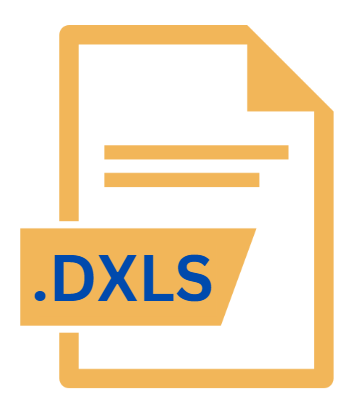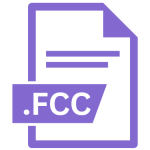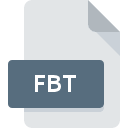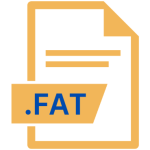.DXLS File Extension

DashXL Skin Set File
| Developer | Palmer Performance Engineering |
| Popularity | |
| Category | Settings Files |
| Format | .DXLS |
| Cross Platform | Update Soon |
What is an DXLS file?
The .DXLS file extension stands for DashXL Skin Set File. This file type is used primarily in the DashXL software suite, a platform designed for customizing the appearance of digital dashboards and interfaces.
DashXL allows users to create visually engaging and functionally rich dashboards by using various skin sets, which are collections of design elements and styles.
The .DXLS file contains these elements, including graphical assets, color schemes, and layout definitions, making it an essential component for users looking to personalize their dashboards.
More Information.
Initially, DashXL was created to offer a user-friendly platform for dashboard customization, particularly for business intelligence tools and other applications requiring visual data representation.
The .DXLS file format was introduced to facilitate the storage and application of complex skin designs. The primary purpose of these files was to enable users to apply comprehensive design changes to their dashboards without needing extensive technical knowledge.
The evolution of the .DXLS file has been closely tied to the development of DashXL’s features. Over time, the file format has been updated to support new graphical elements and more advanced customization options, reflecting the growing needs of users who demand greater flexibility and creativity in their digital interfaces.
Origin Of This File.
The .DXLS file extension originated with the release of DashXL, a software application aimed at providing users with an extensive range of customization options for their digital dashboards.
DashXL was developed by DashTech Inc., a company known for its innovative software solutions designed to enhance user experience in digital environments.
The introduction of the .DXLS file format was part of DashTech’s effort to streamline and standardize the way users could manage and apply custom skins to their dashboards.
File Structure Technical Specification.
The .DXLS file is a structured data file that typically consists of several components:
- Metadata: This section contains information about the skin set, including its version, author, and creation date. Metadata helps DashXL identify and manage different skin sets.
- Graphical Assets: This includes images, icons, and other visual elements that define the look and feel of the dashboard. These assets are often stored in standard image formats such as PNG or JPEG.
- Style Definitions: These are specifications for colors, fonts, and layout arrangements used in the dashboard. Style definitions ensure that all elements of the dashboard adhere to a cohesive design theme.
- Configuration Files: These files contain settings and parameters that control how the graphical assets and style definitions are applied within the DashXL platform.
- Scripts: In some cases, .DXLS files may include scripts or macros that define interactive elements or dynamic features within the dashboard.
The file structure of a .DXLS file is typically organized in a way that allows DashXL to easily parse and apply the contents. This organization includes hierarchical data arrangements and well-defined references to graphical and style elements.
How to Convert the File?
Converting a .DXLS file to another format is not straightforward due to its specialized nature. If you need to extract graphical assets or style definitions for use in other applications, you can follow these general steps:
- Extract Assets: Use file extraction tools to access the contents of the .DXLS file. This may involve renaming the file extension to
.zipand using a zip file extraction utility. - Convert Assets: Once extracted, graphical assets can be converted to standard image formats (e.g., PNG, JPEG) using image editing software.
- Reapply Styles: For style definitions, manually recreate the design in other software by applying the color schemes, fonts, and layout settings as specified in the .DXLS file.
- Repackage: If necessary, you can repackage the assets and styles into a different file format compatible with your target software.
Advantages And Disadvantages.
Advantages:
- Customization: The .DXLS file format allows users to extensively customize their dashboards, providing a tailored visual experience that can enhance usability and aesthetics.
- Standardization: By using a standardized format, DashXL ensures consistency across different skin sets, making it easier to share and apply custom designs.
- Ease of Use: For users familiar with DashXL, the .DXLS file simplifies the process of applying complex design changes without requiring advanced technical skills.
Disadvantages:
- Compatibility: .DXLS files are specific to DashXL, which may limit their use outside of this software environment. This can be a drawback for users who need to integrate their designs with other platforms.
- Complexity: While the file format offers extensive customization options, it may also introduce complexity, especially for users who are not familiar with the technical aspects of skin design.
- File Size: Depending on the number of graphical assets and the complexity of the design, .DXLS files can become quite large, which may impact performance or storage.
How to Open DXLS?
Open In Windows
- Install DashXL and open the .DXLS file directly through the application. DashXL provides built-in tools for managing and applying skin sets.
Open In Linux
- Similar to macOS, running DashXL on Linux may require virtualization or compatibility tools. After setting up DashXL, you can open the .DXLS file using the same procedures as on Windows.
Open In MAC
- As DashXL is typically a Windows-based application, you may need to use virtualization software or compatibility layers such as Wine to run DashXL on macOS. Once DashXL is running, you can open the .DXLS file as you would on Windows.












